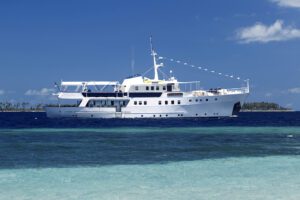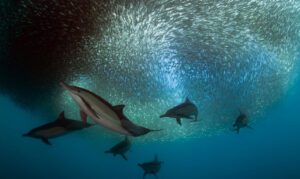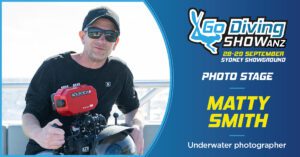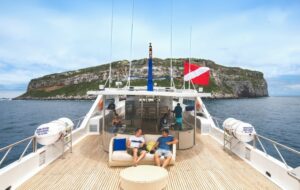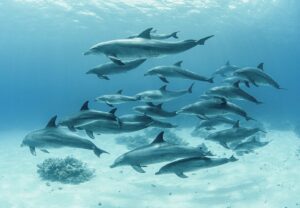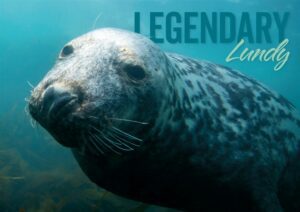DIVING WITH… BROOKE PYKE
PT Hirschfield chats to the award-winning underwater photographer about her work, favourite places to dive, and being based in the whaleshark capital of Australia
Photographs by Brooke Pyke and Oliver Clarke
Dive instructor Brooke Pyke is an award-winning underwater photographer based on the Ningaloo Coast, WA. She works full-time for a small family owned whaleshark tour company (Live Ningaloo in Exmouth), now in her third season of taking tour photos from March to October.
It’s a dream job and Brooke ‘pinches herself’ regularly: ‘I did photography as a hobby for many years, putting together a portfolio for job applications. The dive industry as a whole worldwide is very small. Having good references and connections can lead to opportunities.
‘When I’m not working full time on the boat, I do freelance photography work, plus write for and provide photos for magazines. Last year I set up an online store selling fine art prints of my work which is doing quite well.
My job is very rewarding and I get to have some seriously epic encounters. I would never say it’s easy and it’s not for everyone. Swimming with megafauna daily is exhausting. Some days I swim 4-5km in open ocean, towing a heavy camera. But I love it and I’m so happy my path led me here.’
Brooke completed her open water course at age 21 when she learned to scuba dive on vacation in Thailand, immediately followed by the Advanced course. Then she shocked her family by booking a one-way ticket to Thailand to pursue training to become a professional diver.
She landed a Divemaster position on a Great Barrier Reef liveaboard, four months later accepting a year-long position as a Divemaster and assistant manager in Bali: ‘This was one of my most-challenging jobs, with low pay and long days.
There’s nothing like guiding customers in ripping currents daily to make you good at your job.’ Brooke returned to Australia for a year, then travelled across Europe for six months before returning to complete her instructor training and accepting a full-time instructor job at a large dive resort on Bali’s Nusa Lembongan.
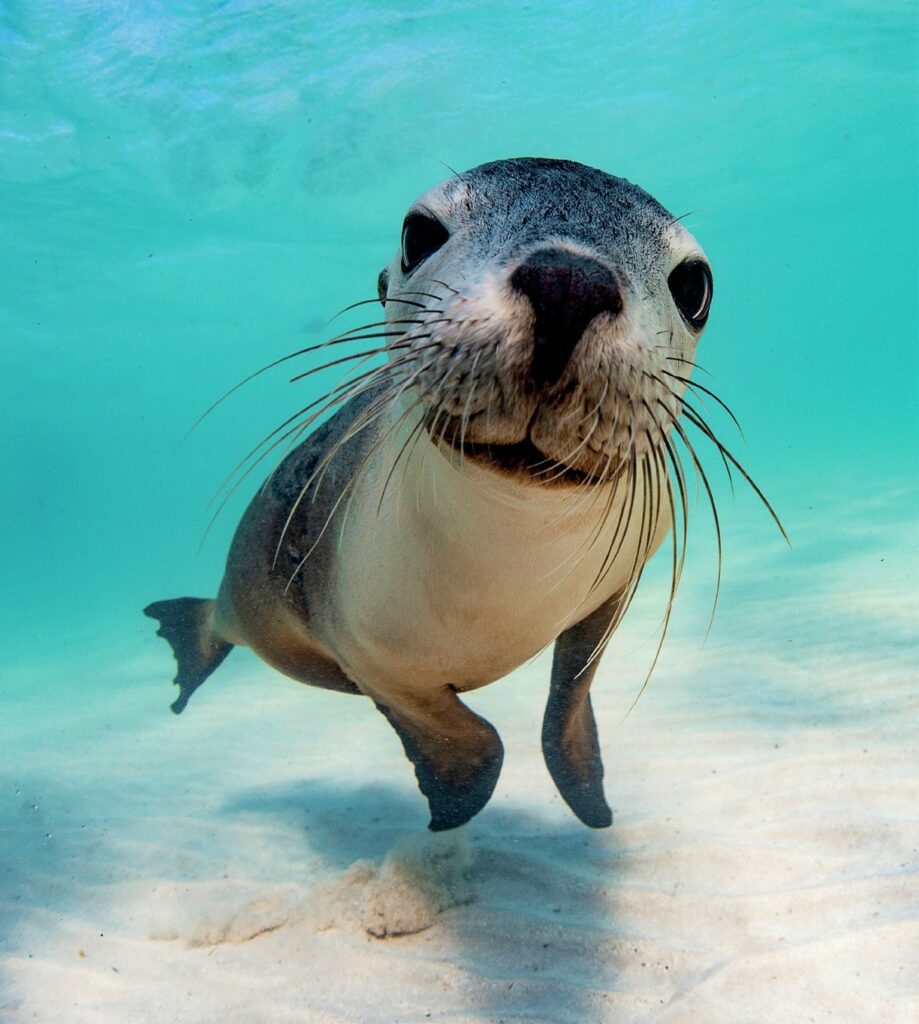
At this point, Brooke purchased her first compact underwater camera: ‘I’d applied to study photography at university but hadn’t been accepted, so instead I studied graphic design. I progressed by teaching myself and reading about underwater photography online.
The dive centre I worked for asked me to take photos for their social media and website content. It gave me back some of my creativity which I didn’t get from teaching diving.’
Reflecting on the learning curve of upgrading from a compact camera to a more-professional underwater system, Brooke reflects: ‘I always felt frustrated with my compact. Though I managed to create some nice shots with it, I’d definitely reached the camera’s limits.
Moving to full frame with the versatility of quality interchangeable lenses helped me achieve much higher quality work.’
Brooke admits she found the idea of entering photo competitions intimidating until recently: ‘I’d only entered a couple that had a conservation category. I managed to place 3rd in Ocean Art with an image of a manta ray feeding in plastic off the coast of Bali.
Last year I won the Ocean Photographer of the Year female category called the ‘Female Fifty Fathoms’ award. I’ve also received some recognition in the Mono awards and Underwater Photographer of The Year. Winning in 2022 has been great exposure for my work and has opened up quite a few new opportunities. I’m excited to see where my career will lead me next.’
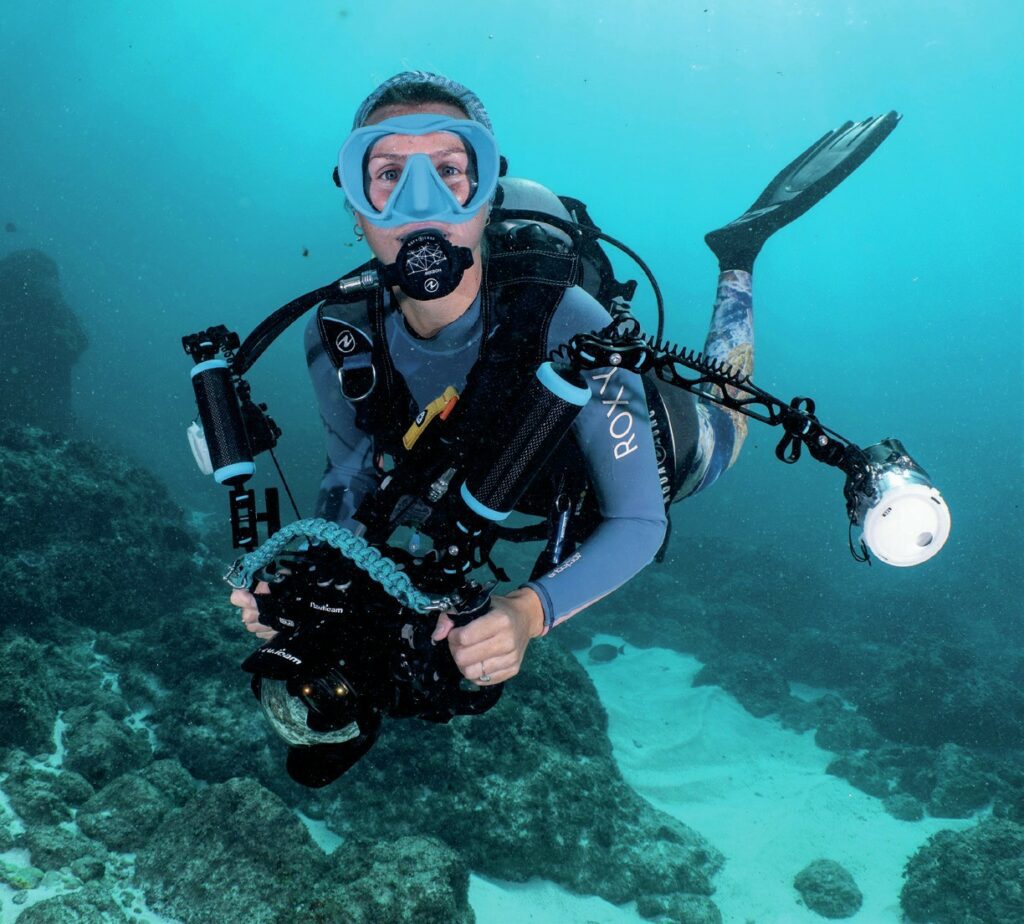
Most of Brooke’s diving to date has been in Indonesia: ‘The diversity of marine life is unparalleled. There are worldclass sites. My favourite is Four Kings in Misool, Raja Ampat. It’s a huge sea mount with four rocky pinnacles that rise up just below the surface.
The coral cover is stunning; sea fans, soft corals and hard corals blanket it. But the density of fish makes it breathtaking. There’s so much action going on; at times you can’t even see your dive buddies next to you. Trevally, tuna and reef sharks buzz around, feeding on baitfish and anchovies. When I think of a healthy ocean, that’s what I picture.
‘My second favourite to Indonesia, I’d have to say the Ningaloo Reef. Not only for the unique marine interactions you can get there, but also for the accessibility of it. I can swim right off the beach and immediately be surrounded by tropical reef.
In my first week living here I swam with mantas at a secret spot off the beach. That day I told myself I’m never leaving Ningaloo. It’s exactly where I want to be. Away from big cities, surrounded by raw nature, having real, wild experiences.
Over the past two years I’ve seen orcas hunting and migrating blue whales. I’ve swum with tiger sharks and countless whalesharks. I’ve witnessed humpback whales feeding on krill, turtles mating, laying and hatching. There are so few places in the world left like this.’
Brooke feels particularly drawn to sharks: ‘As photographers, I believe we have a responsibility to use our work as a voice for protecting what we love. Photographing sharks lets me present a different narrative that isn’t about them being ‘blood-thirsty killers’.
I hope that in showing their beauty, elegance and importance that I can help to change the public’s perspective. I hope that somehow my work and experience of swimming with them daily can help give these animals the respect they deserve.’
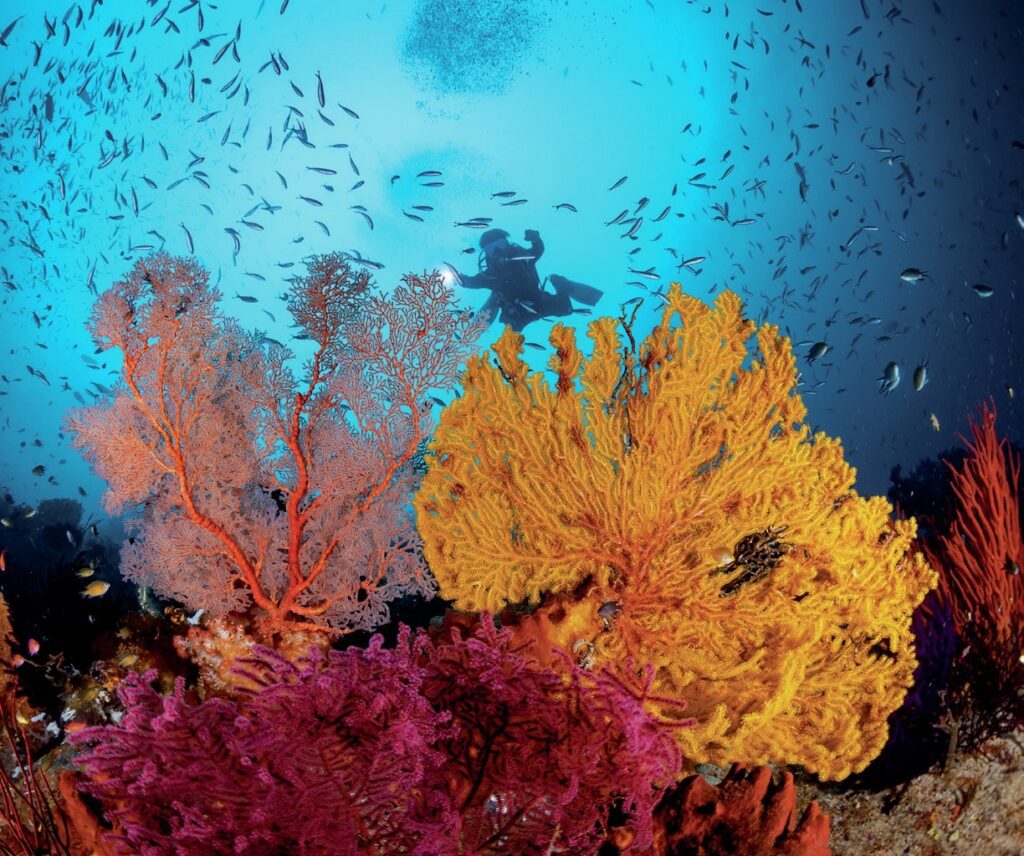
While these days it’s rare for Brooke to teach, in 2023 she advertised three five-day photography safaris on the Ningaloo Reef, all selling out within two weeks. She says: ‘A lot of people underestimate how much time and energy it takes to get your dream shot.
It’s not only knowing how to use a camera, but also about being able to spot subjects and understanding their behaviour and habitat use. Seasonal changes and ocean conditions come into play.
Reading body language of animals and predicting their next move is a skill. Positioning yourself and approaching quietly enough to get the shot takes a lot of practice. You learn to first stop, get your settings right and think about lining yourself up for getting the photo.
You might end up with fewer shots overall with this approach, but more of the shots will be successful. It’s a more relaxing experience – for us and the animals – when we interact calmly and with respect.’
You can learn more about Brooke’s photography and keep up to date with future workshops and trips she runs, as well as sign up for her newsletter.


We design, manufacture and retail scuba and rebreather equipment. We have fully equipped test and certification labs, and can pressure test large items in our vacuum chambers, as well as run fully automated leak test and dive simulations down to 400m. Our EMC and EMF lab is filled with state-of-the-art equipment for testing electromagnetic compatibility and electromagnetic fields. We also have a large in-house laser for cutting and engraving on plastics and metals.
This article was originally published in Scuba Diver ANZ #58.
Subscribe digitally and read more great stories like this from anywhere in the world in a mobile-friendly format. Link to the article



